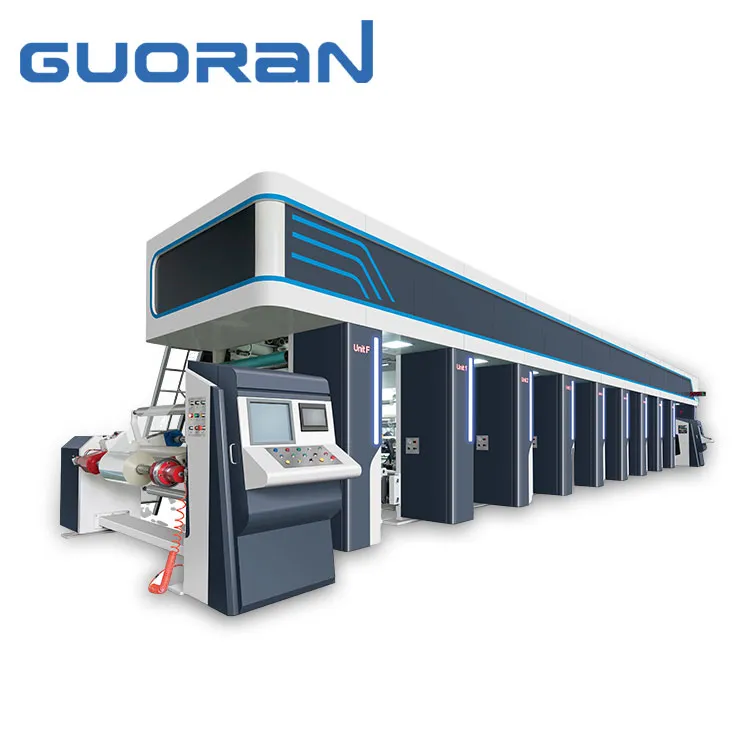How Choosing the Right Printing Machine Impacts Project Costs
2024-10-26
In the printing industry, the choice of printing machine plays a critical role in determining the overall cost and quality of a project. From small businesses to large corporations, companies need to balance quality, efficiency, and budget constraints to produce printed materials that meet their needs without breaking the bank. With a wide range of options available — from traditional offset presses to digital and large-format printers — understanding how each machine type impacts project costs can make a significant difference. Let’s explore the key ways in which the right printing machine can optimize your project budget.
1. Upfront Costs and Machine Versatility
The initial cost of a printing machine can be a major expense, but it often determines the type of jobs the machine can handle:
- Offset Printing Machines: Offset presses have high initial setup costs but offer some of the lowest per-unit costs for large print runs. Due to their efficiency with bulk printing, they are ideal for high-volume projects where consistent quality and low per-print costs are essential.
- Digital Printers: While digital printers generally have lower upfront costs, their per-unit cost remains relatively high, especially for larger volumes. However, their flexibility and minimal setup make them perfect for short runs, personalized prints, and rapid turnaround jobs.
- Large-Format Printers: For projects requiring banners, posters, or large-scale visuals, large-format printers are the go-to choice. Though they often come with higher material costs, their versatility can support various media, including vinyl, canvas, and fabric, enabling businesses to handle specialty projects efficiently.
The key is to match the printing machine to the type and volume of projects typically handled. Businesses that need versatile printing options can benefit from investing in a machine that handles multiple print types efficiently, while those focused on high-volume projects can achieve cost savings through an offset press.
2. Operating Costs and Maintenance
Printing machines differ widely in terms of operating costs, with factors like ink consumption, power usage, and maintenance affecting project costs over time:
- Ink and Toner Costs: Ink and toner consumption varies based on the type of printing machine. Offset presses use plates and ink rollers, which are economical for large runs. Digital machines, however, require toner or inkjet cartridges, which can be costly for high-volume printing. Understanding the specific ink needs of each machine type can help avoid unplanned expenses.
- Electricity and Energy Efficiency: High-speed machines and large-format printers often consume more electricity. However, newer digital models are designed to be energy-efficient, reducing electricity costs over time. Opting for an energy-efficient machine not only minimizes operational costs but also supports sustainability efforts.
- Maintenance and Repairs: Routine maintenance is necessary to keep machines functioning optimally. Offset presses have a higher need for maintenance due to their mechanical parts, whereas digital printers require regular cleaning of print heads and calibration. Choosing a machine with lower maintenance needs can prevent unexpected downtimes and additional repair costs.
By evaluating these operating costs and choosing a machine with predictable, manageable expenses, businesses can reduce the hidden costs of their printing projects.
3. Print Speed and Project Turnaround
The time it takes for a machine to complete a print run affects overall project timelines and labor costs:
- High-Volume Projects and Offset Printing: Offset presses can handle thousands of copies per hour, making them highly efficient for bulk orders. Their speed and cost-effectiveness for large runs help businesses save on both labor and machine wear.
- Digital Printers and Short Runs: Digital printers shine when it comes to short runs and quick turnarounds, as they don’t require extensive setup. However, their speed is limited compared to offset machines, which can increase labor costs if large volumes are printed digitally.
- Large-Format and Specialty Projects: Large-format printers typically operate at slower speeds due to the nature of the print media. For projects with flexible timelines, adjusting the print speed and resolution can help manage costs without sacrificing quality.
Selecting a machine with the right speed capabilities for the project type helps control labor costs, improve workflow, and deliver projects on time, ultimately impacting the total project cost.
4. Quality Control and Print Consistency
The quality of printed materials plays a significant role in customer satisfaction and brand image. Each printing machine has different capabilities when it comes to quality:
- Color Consistency: Offset printing is known for its vibrant and consistent color reproduction, making it ideal for projects where branding and color accuracy are critical. Digital printers have improved in color reproduction but may still face challenges in achieving the same consistency over large runs.
- Resolution and Detail: For high-resolution graphics and detailed images, large-format printers and certain high-end digital models excel. While high-quality output may come with additional costs, it adds value to projects that demand visual impact, such as marketing materials and artwork reproductions.
By investing in a machine that meets the required quality standards, businesses can reduce the likelihood of reprints and associated costs, ensuring that each project delivers the desired results.
5. Environmental and Compliance Considerations
Environmental sustainability is an increasingly important factor in the printing industry. Selecting eco-friendly machines that reduce waste and use energy-efficient technology can help reduce costs and support compliance:
- Waste Reduction: Machines with efficient ink and paper usage reduce waste and disposal costs. Digital printing minimizes waste by allowing precise control over the quantity, while offset presses can produce waste during setup but excel in high-volume efficiency.
- Green Certifications: Some machines are designed with environmentally friendly features, such as biodegradable inks, recyclable cartridges, and energy-efficient mechanisms. While these machines may have a higher initial cost, they can provide savings in terms of compliance with eco-friendly standards and contribute to corporate social responsibility goals.
Considering these environmental factors when choosing a machine can lead to long-term cost savings and a positive brand image, helping businesses meet both financial and ethical goals.
The right printing machine is more than a capital investment; it’s a strategic tool that influences costs across every stage of a printing project. By carefully evaluating machine capabilities in terms of setup costs, operational efficiency, quality control, and environmental impact, businesses can optimize their printing processes, manage expenses, and achieve greater project profitability. Whether for bulk orders, quick-turnaround jobs, or high-quality prints, choosing the right machine is the key to successful and cost-effective printing.



